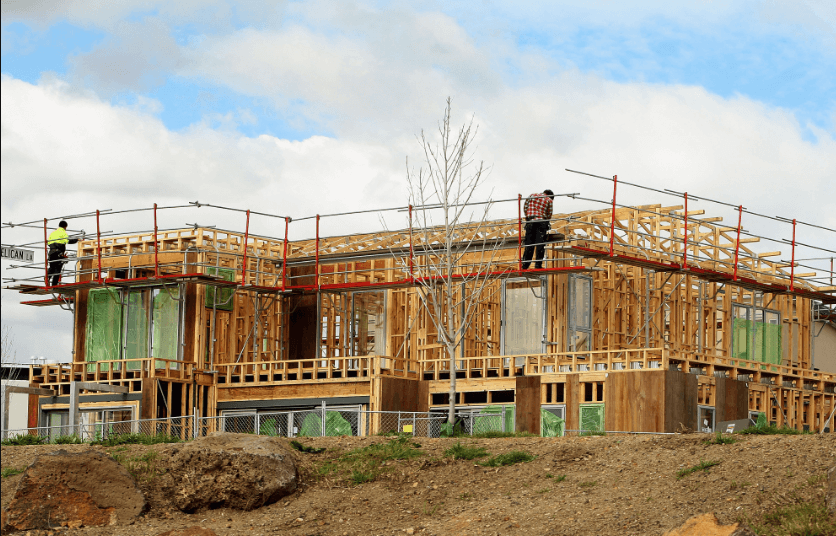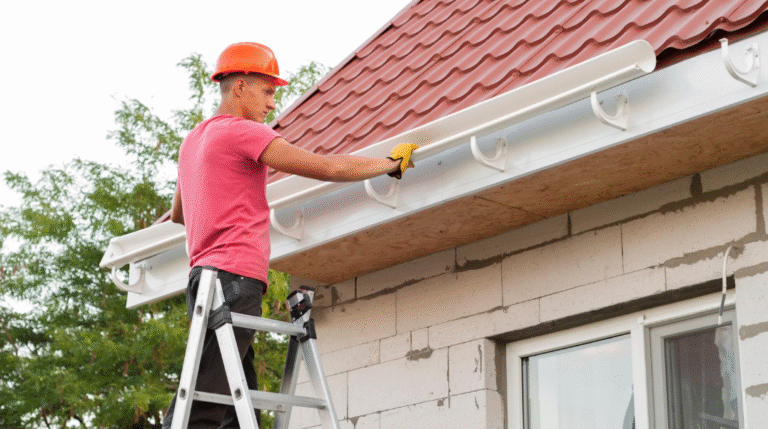Essential Guide to Selecting Home Builders in Australia
The decision to build a new home marks one of life’s most significant milestones, representing years of saving, careful planning, and anticipation of future memories. At the centre of this journey stands the choice of home builders—professionals who transform architectural plans and personal dreams into tangible structures where families will live, grow, and thrive. Making an informed selection requires understanding the industry, recognising quality indicators, and knowing which questions to ask.
The Australian Home Building Industry Landscape
Australia’s residential construction sector encompasses diverse home builders operating at various scales and specialisations. Understanding this landscape helps match expectations with the right type of builder. National volume builders operate across multiple states, constructing thousands of homes annually using standardised designs and streamlined processes. These organisations offer competitive pricing through economies of scale and established supply chains.
Regional builders focus on specific geographic areas, developing deep knowledge of local conditions, council requirements, and community expectations. This regional expertise often translates to smoother approval processes and designs better suited to local climates and lifestyles. These home builders typically construct dozens to hundreds of homes annually, balancing personalised service with professional systems.
Boutique and custom home builders specialise in bespoke projects, offering highly personalised services and flexibility in design. Operating at smaller scales, these builders focus on craftsmanship, unique designs, and close client relationships. They appeal to homeowners seeking distinctive homes that reflect individual preferences rather than standardised solutions.
See also: We Buy Houses for Cash: A Simple Solution for Homeowners in Need
Credentials and Qualifications to Verify
Licensing requirements for home builders vary across Australian states and territories, but all legitimate operators must hold appropriate licenses. In New South Wales, builders require licenses from NSW Fair Trading. Victorian home builders need registration with the Victorian Building Authority. Queensland operates through the Queensland Building and Construction Commission, whilst Western Australia requires registration with the Building Services Board. Verifying these credentials represents a critical first step in evaluation.
Insurance coverage protects homeowners from various risks associated with construction. Home warranty insurance, mandatory in most jurisdictions for residential projects above certain values, ensures completion of the home if the builder becomes insolvent or protects against defects. Public liability insurance covers damage to neighbouring properties or injuries occurring on site. Professional indemnity insurance, whilst less common for builders, offers additional protection in disputes.
Industry memberships provide additional confidence in home builders’ professionalism. Organisations such as the Master Builders Association and Housing Industry Association maintain codes of conduct, offer dispute resolution services, and require members to meet certain standards. Whilst membership alone doesn’t guarantee quality, it demonstrates commitment to professional standards and provides additional recourse if problems arise.
Financial stability indicators help assess whether home builders can sustain operations throughout the construction period. Long-established businesses with consistent track records demonstrate resilience. Requesting financial references, checking for any legal disputes or insolvencies, and reviewing payment terms help gauge financial health. Struggling builders often demand unusually large deposits—a red flag warranting caution.
Evaluating Design Capabilities and Flexibility
Design libraries offered by home builders reveal their range and aesthetic sensibilities. Comprehensive portfolios spanning various styles—from contemporary to traditional, compact to expansive—indicate versatility. Reviewing these designs helps assess whether the builder’s aesthetic aligns with personal preferences and whether they’ve successfully executed similar projects.
Customisation flexibility varies significantly among home builders. Volume builders typically offer modifications within predetermined parameters—adjusting layouts, upgrading finishes, or altering facades within their system. Custom builders accommodate more substantial changes but at higher costs and longer timelines. Understanding customisation boundaries prevents disappointment when certain desired modifications prove impossible or prohibitively expensive.
Display homes provide invaluable opportunities to assess build quality, finish standards, and spatial qualities. Walking through completed homes reveals craftsmanship levels, material quality, and how designs function in reality versus on paper. Observing details like alignment of tiles, smoothness of paint finishes, operation of fixtures, and overall attention to detail indicates the builder’s quality standards.
Design consultation processes during initial meetings reveal how home builders approach client relationships. Attentive builders ask detailed questions about lifestyle needs, family composition, future plans, and preferences. They offer suggestions based on experience whilst respecting client wishes. This collaborative approach typically produces better outcomes than builders who simply push predetermined designs without genuine engagement.
Understanding Pricing Structures and Contracts
Pricing models used by home builders range from fixed-price contracts to cost-plus arrangements. Fixed-price contracts specify the total cost upfront, providing certainty but less flexibility for changes. Cost-plus contracts charge actual costs plus a builder’s margin, offering transparency but less certainty about final costs. Understanding which model applies and its implications helps set appropriate expectations.
Inclusion schedules detail exactly what the quoted price covers. Reputable home builders provide comprehensive documentation specifying everything from site preparation to final finishes. These schedules typically categorise items as standard inclusions, upgrades available at additional cost, or exclusions requiring separate contracts. Careful review of inclusions prevents misunderstandings about what’s actually covered.
Provisional sums represent estimated costs for items that can’t be precisely quantified during quoting—typically site works, council fees, or utility connections. Understanding which items fall under provisional sums and how variations from estimates are handled prevents budget blowouts. Experienced home builders provide realistic provisional estimates based on similar projects.
Payment schedules should align with construction progress rather than requiring large upfront payments. Standard structures involve deposits of 5-10%, with subsequent payments at major milestones like foundation completion, frame erection, lock-up, and practical completion. This structure protects homeowners by ensuring payments correspond with work completed whilst providing builders with adequate cash flow.
Communication and Project Management
Communication protocols established at the project outset prevent frustration later. Clear understanding of who serves as the primary contact, how questions get answered, and expected response timeframes sets appropriate expectations. Quality home builders assign dedicated project managers who maintain regular contact throughout construction, providing updates and addressing concerns promptly.
Progress reporting frequency varies among home builders but should occur regularly throughout construction. This might include weekly emails, online portals showing project status, or scheduled site meetings. Transparent reporting allows homeowners to track progress, understand any delays, and feel confident the project remains on schedule.
Change management processes govern how modifications during construction get handled. Even well-planned projects sometimes require adjustments due to unforeseen site conditions or homeowner preference changes. Understanding how home builders document, price, and implement variations prevents disputes when changes become necessary.
Site access policies vary, with some home builders welcoming regular visits whilst others restrict access for safety or insurance reasons. Clarifying these policies upfront prevents conflicts. Reasonable builders accommodate periodic inspections by homeowners or their representatives at appropriate construction stages.
Construction Quality and Standards
Building standards compliance represents a non-negotiable requirement for legitimate home builders. All construction must meet the Building Code of Australia, which specifies minimum requirements for structural integrity, fire safety, health and amenity, and energy efficiency. Reputable builders consistently exceed minimum standards, incorporating better practices that enhance durability and performance.
Quality control processes implemented by professional home builders include regular inspections at critical stages. This might involve foundation inspections before concrete pours, frame inspections before closing walls, and comprehensive pre-handover inspections. These checks identify issues early when remediation remains straightforward and less costly.
Subcontractor management significantly impacts overall construction quality. Home builders coordinate multiple specialised trades—concretors, plumbers, electricians, carpenters, and more. Established relationships with reliable subcontractors ensure trades complete work to standard, appear as scheduled, and take pride in their contributions. Builders constantly rotating through different subcontractors often experience quality and coordination challenges.
Material quality varies enormously across the home builders spectrum. Whilst all materials must meet certain standards, quality home builders specify superior products that enhance durability, performance, and aesthetics. This might include higher-grade framing timber, premium roofing materials, quality fixtures and fittings, or enhanced weatherproofing systems.
Timeline Expectations and Project Completion
Construction timeframes vary based on home size, complexity, site conditions, and weather. Single-storey homes on prepared sites might be completed in 4-6 months, whilst larger or more complex projects extend to 8-12 months. Home builders should provide realistic schedules that account for sequential dependencies, material lead times, and reasonable contingencies for weather or unforeseen issues.
Weather impacts, particularly in regions with distinct wet seasons, can delay construction. Professional home builders build weather contingencies into schedules and communicate proactively when weather causes delays. Understanding how weather might impact timelines, particularly for the relevant building period, helps set realistic expectations.
Supply chain considerations have become increasingly important in recent years. Global and domestic supply constraints can delay delivery of specific materials or fixtures. Experienced home builders anticipate potential delays, specify readily available alternatives where possible, and communicate early when supply issues emerge.
Practical completion marks the formal handover when the home becomes available for occupation. This doesn’t necessarily mean every minor item is finished—defects lists typically identify minor items requiring rectification during the defect liability period. Understanding what constitutes practical completion versus final completion prevents confusion at this milestone.
Warranty and After-Sales Support
Statutory warranty periods protect homeowners for specified timeframes after completion. In most Australian jurisdictions, home builders remain liable for major structural defects for six years and other defects for shorter periods. Understanding what falls under warranty coverage—and what doesn’t—clarifies homeowner and builder obligations.
Defect liability periods, typically 12 months after practical completion, provide the opportunity to identify and rectify any workmanship issues. During this period, home builders address legitimate defects at no cost. Maintaining good records of defects, including photographs and written descriptions, facilitates efficient resolution.
Maintenance guidance provided by quality home builders helps homeowners understand how to care for their new homes. This includes maintenance schedules for various systems, warranty information for appliances and fixtures, and guidance on cleaning and caring for different materials. This documentation supports long-term home performance.
After-sales support distinguishes exceptional home builders from average ones. Even after the defect liability period expires, reputable builders remain available for questions, provide referrals for maintenance or modifications, and maintain relationships with homeowners. This ongoing support reflects confidence in their work and commitment to customer satisfaction.
Sustainability and Energy Efficiency
Energy rating requirements under the National Construction Code mandate minimum efficiency standards for new homes. However, forward-thinking home builders exceed these minimums, incorporating features that significantly reduce energy consumption. This includes superior insulation, high-performance glazing, efficient heating and cooling systems, and solar energy systems.
Passive design principles leverage climate, orientation, and building form to reduce energy needs. Home builders knowledgeable about passive design orient homes to maximise natural light and warmth in winter whilst minimising summer heat gain. They incorporate thermal mass, cross ventilation, and shading appropriately for the specific climate zone.
Sustainable materials increasingly feature in environmentally conscious construction. This includes responsibly sourced timber, recycled content materials, low-VOC finishes, and products with minimal environmental impact. Home builders committed to sustainability specify these materials as standard rather than requiring homeowners to specifically request them.
Water efficiency measures reduce consumption and utility costs. This includes water-efficient fixtures, rainwater collection systems, and landscaping designed for local climate conditions. Quality home builders incorporate these features as standard or offer them as readily available options.
Making the Final Selection
Comparison shopping across multiple home builders provides perspective on pricing, quality, and service levels. Requesting detailed quotes from at least three builders allows meaningful comparison. However, comparing quotes requires ensuring they cover equivalent scope—the cheapest quote often excludes items others include.
Reference checking provides invaluable insights into how home builders actually perform. Speaking with recent clients reveals how builders handle challenges, communicate during difficult periods, honour commitments, and address defects. Most reputable builders readily provide references and may facilitate viewing recently completed homes.
Contractual terms require careful review, preferably with legal advice. Construction contracts contain important provisions regarding variations, delays, dispute resolution, and obligations of both parties. Understanding these terms before signing prevents surprises and protects interests throughout the construction period.
Personal rapport matters more than many people realise. Construction projects require regular interaction with home builders over many months. Selecting builders whose communication style, values, and approach align with personal preferences contributes significantly to a positive experience and successful outcome.
Conclusion
Selecting home builders represents a decision requiring careful consideration of multiple factors. Quality, price, service, experience, and personal compatibility all influence outcomes. Investing time in thorough research, asking detailed questions, verifying credentials, and comparing options comprehensively pays dividends throughout the construction process and for years afterward. The right home builders become partners in creating not just houses, but homes where families flourish, memories accumulate, and daily life unfolds comfortably. This partnership, built on trust, clear communication, and shared commitment to quality, transforms the aspiration of homeownership into the reality of a well-crafted home that serves its occupants beautifully for decades to come.






